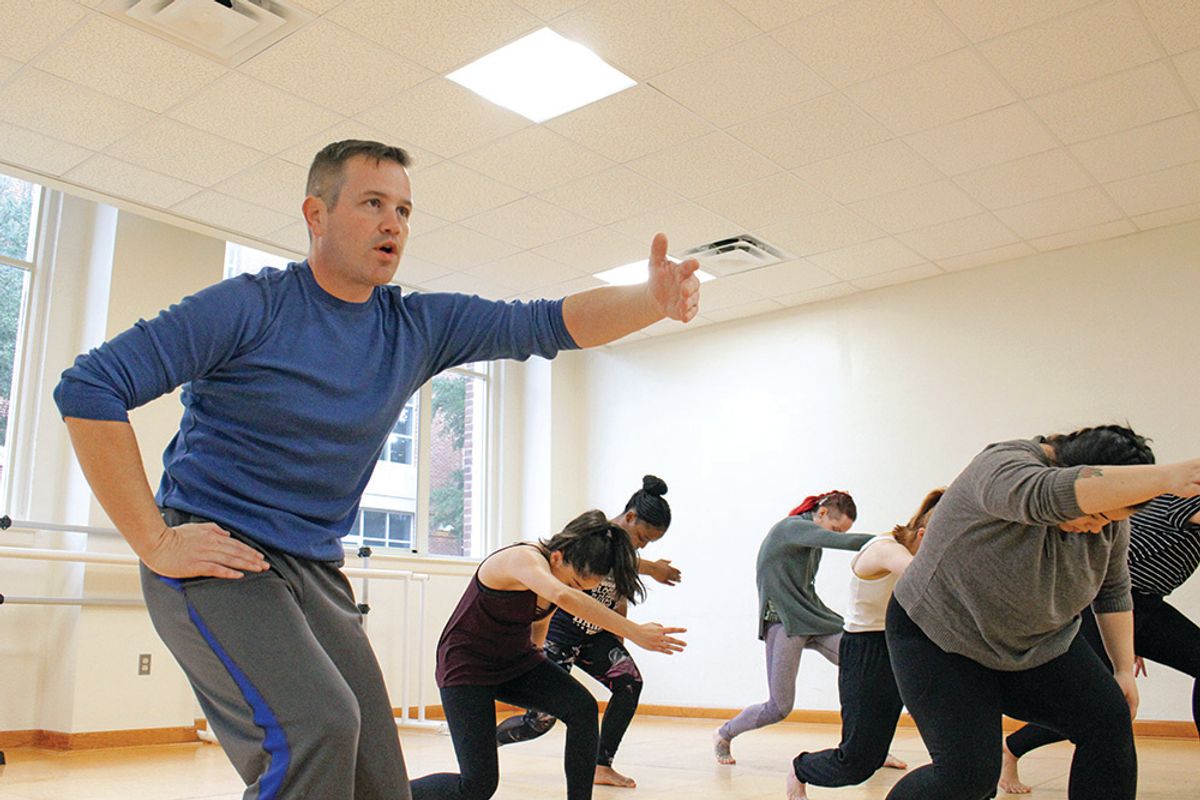
Looking back on his early dance education, Matthew Henley, an assistant professor at Texas Woman’s University in Denton, remembers the grading process as being rather “opaque.” “Any assessments seemed to be verbal, informal and casual. Most everyone got A’s,” he says.
Henley spent eight years teaching in elementary schools as a guest artist in New York and New Jersey before earning his MFA in dance and a PhD in educational psychology from the University of Washington. He’s developed a concept-based approach to grading dance technique, which he uses in his modern dance class at TWU. His grading system could prove especially useful in K–12 school dance classes where teachers must submit grades.
The Need for Clearer Assessment
Henley began revamping his approach to grading six years ago when he started at TWU. The department’s grading policy asked that he give students a daily grade of 1 to 10. “I needed to be able to articulate clearly why a student would move from level 1 to level 2,” he says. “Was it because they were in the room for a year? Was it because they tried hard?”
Henley determined the skills and concepts students needed to show in his class, but realized that he needed to be able to communicate his expectations in order to justify the numerical grade. With some students, he noticed they expected just to show up, imitate the teacher and get good grades.
A Concept-Based Approach
Henley was inspired by Anne Green Gilbert’s creative dance curriculum and Jody Gottfried Arnhold’s Dance Education Laboratory model to create his own concept-based approach to assessment. “While still teaching a fairly typical Western concert-dance technique class, which includes roll-downs, tendus, dégagés, ronds de jambe, développés, battements, jumps across the floor and a final phrase, I focus each day on one specific concept,” he says.
He divides the term into five units: body, space, time, quality and relationship. Within those are smaller units that support the larger concepts.
Students are told the day’s concept, and their grade sheet for that day reflects their proficiency and/or progress on only that one concept. “For me, this reduces the complexity of grading, because instead of having to track body, space, time, quality and relationship, I only need to track one,” says Henley.
What the Numbers Mean
Students get a numerical grade of 1 through 10 for each day, which translate as:
< 7 – not developing
7–8 – slowly developing
8–9 – developing as expected
9–9.5 – meeting expectations
> 9.5 – exceeding expectations
Henley factors in students’ effort in class, but his focus is how well and consistently they demonstrate the day’s concept.
Providing Agency
Assessing students this way helps them track their own progress. “Assessment is simply information given to them that hopefully is useful in their developing agency over their own practice,” Henley says. Having a daily numerical grade tied to a concept allows students to look back over their semester and see the areas they need to work on. “They can look and see, ‘Oh, in the body unit I was getting 8s, but in the space unit I’m getting 9s. I must understand space more than I understand body,'” he says.
Focused Learning
This grading system also provides increased focus for students. Learning dance demands a high cognitive load. There are dozens of things to pay attention to: timing, proximity to others, body position, dynamics and more. By providing a single focal point for students, Henley reduces that mental clutter. “I tell them, ‘If it’s too complicated to do the arms, stop doing the arms and focus on the spine, because that’s the concept for the day,'” he says.
Finding the Core Concepts
Teachers moving through units of different dance styles each year should find the three most important elements of each and create daily concepts and exercises based on those. For example, a jazz unit could be built around the ideas of isolation, rhythm/musicality and groundedness. “There are a wide variety of ‘correct’ choices for all forms,” Henley says. “Once you choose the three, think through the developmental levels. What could an absolute beginner do, related to this concept? What does it look like on professionals? What are the steps in between?”
When Assessment Means Advocacy
K–12 dance teachers are required to adhere to the National Core Arts Standards. Henley proposes that his grading system helps with planning around those. “If you look at the dance standards, there isn’t a ‘pirouette’ listed,” he says. “But if you understand it from a conceptual perspective, it’s easy to go to the standards and explain how a pirouette is demonstrative of and supported by them.”




